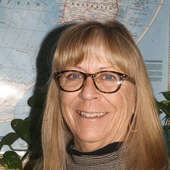- Historic shift: Women hired at McCook Roundhouse (3/21/25)
- Who were they? Seeking names for these historic snapshots (3/14/25)
- McCook’s government transformed in 1950; city manager form of government adopted and first female councilperson elected (3/7/25)
- Beyond the front lines: Veterans who shaped our communities (2/28/25)
- Civil War stories: The bugler and the drummer (2/21/25)
- Jack Benton: A broadcast trailblazer (2/7/25)
- Legs and free rides at airport dedication; Big Give update (1/30/25)
WW I draft registration records, census reports, help in research on early black athlete at McCook High School
Friday, March 1, 2019
The SWNGS library has a large accumulation of McCook High School Annuals which I often go to for stories. Some of the annuals are very detailed and provide pictures of all the classes in McCook from Kindergarten on up. Others have pictures, but no names attached to them other than generic “Choir” or “Wrestling” underneath. It is very frustrating when you see a picture that you would like to know more about. That is my hint for the day, label and identify pictures, for yourselves or for others in the future!
One of the very early annuals has a sports team picture with, of course, no one identified. Standing on the left side is a young black athlete. It piqued my curiosity, who could this young man be?
Researching is a hit or miss proposition most times and quite obviously you must be persistent in trying to find something, well, anything, that will give you a clue. I couldn’t think of any way around identifying this athlete even though black families were a rarity in Western Nebraska in the early 1900’s.
After the Civil War, African Americans began to leave the South when the Federal Troops that had been working with the Reconstruction efforts were pulled out and laws segregating blacks from whites were being passed. Known as Exodusters, small groups of black settlers started moving to Kansas and Nebraska. One group settled in Franklin County near Lovely Creek, naming their town Grant, in 1871. Unfortunately, the group had pooled all their money for safekeeping and appointed a treasurer to hold it. When, according to legend, he lost his pocketbook the town was doomed to never be and the settlers moved on. Lovely Creek lays mostly south of Highway 36 in that county but topography has changed due to todays’ dams.
The railroad also drew from the labor pool of freed men and many of the black settlers coming to Nebraska chose railroad towns as their new homes. Most of these were in the eastern part of the state in the beginning but as the railroad traveled westward, so did they.
None of these facts helped me though and I really was at a standstill until I remembered the WWI draft registration records that are on the SWNGS website! All of those records contain the height, build, eye color, hair color, nationality (alien, declared or citizen) and RACE of each registrant! They also tell where the registrant lived and who their dependent(s) were.
There the possible fathers were, the two adult black men living in McCook in 1918: Henry Thomas and Charles Mitchell Smith. Scrolling across I found that Henry was born in 1876, he lived on West B Street, was native born, and worked as a cook and janitor for J.P. Stone. He was married, and his wife’s name was Helen. While it did not list other dependents, Henry was 42 at this time and his children could easily have already been grown and gone. What was interesting about Henry is that in the 1930 Census he was still living in McCook at 117 Norris Ave. and was at 70 years old, a janitor for a shoe shine parlor. I’ve not found children attributed to Henry.
Charles Smith did seem a more likely candidate even though only Ida M., his wife, was listed because in my mind he was more settled. He lived at 407 West 4th and worked for CB&Q Railroad as a janitor. In 1918, having been born March 12, 1878, he was 40 years old.
It appeared as if I would have to go to other sources for information about his family and in the 1920 Census, I found this: Charles M. Smith, wife Ida & children: Flosstine, Edgar, Floyd and Benny. He lists his occupation as Bootblack with his own shine parlor, his son Edgar working with him. Ida, who is 38 at that time lists “working out” in private homes as her occupation.
Now I will pass on another lesson I’ve learned about research: Always go to the original document if it’s available! I found the transcribed census online, but the transcription placed this families race as white. However, when I looked at the original document, their race was listed as mulatto, or a mixture of black and white heritage, an expression that is not used today for very good reasons.
Could this be my family whose son was the athlete on the high school team? More research than todays’ column allows will have to be done, but I intend to dig deeper!
Winter has played havoc with our open library hours! Always remember our library is staffed by volunteers and none of us are spring chickens! If the weather permits, we open our doors on Tuesdays and Thursdays from 1-4 PM, 110 West C Street, Suite M-3.

